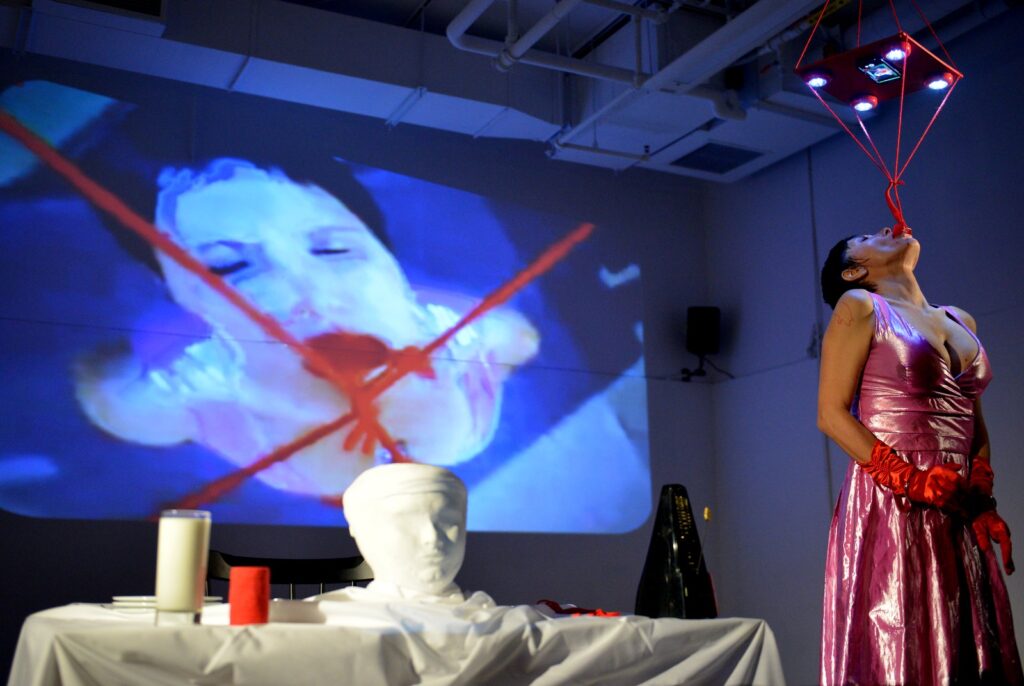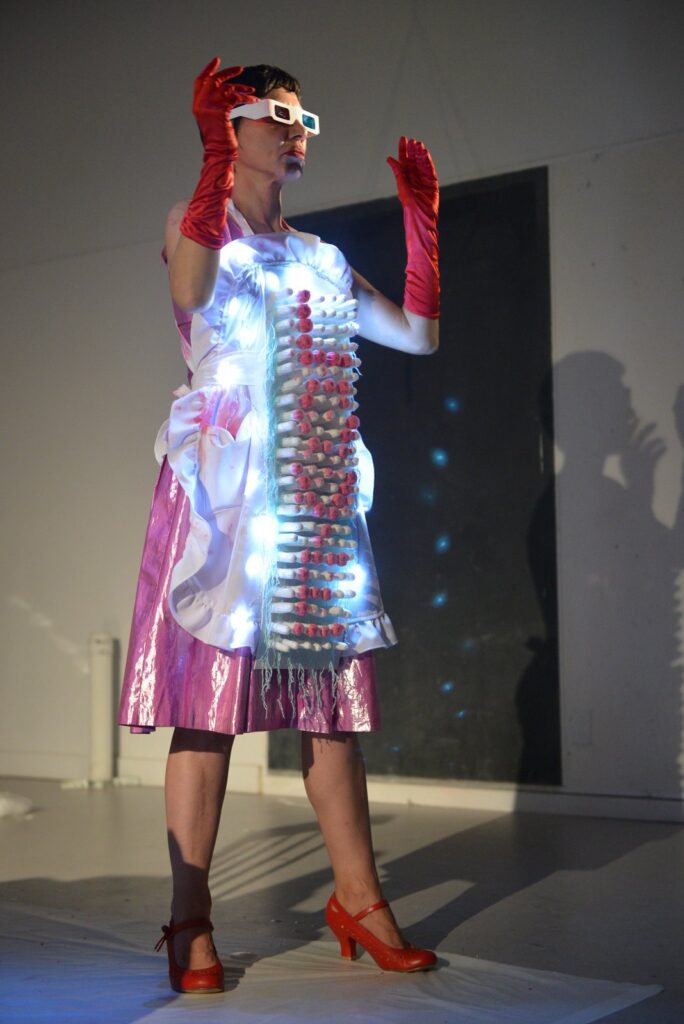By Alison Cooley

Francesca Fini’s performance space is a theatrical set. Her props and environment impeccably arranged, dramatically lit. Red, white and pinkare the scene’s characteristic colours. There is a bandaged white face on a table, a red suspended platform dripping a red popsicle over a fishbowl, an apron riddled with Eva Hesse-like protrusions. Fini monitors us as we enter. Although her hands are cuffed, her presence is commanding.
“They say cold preserves beauty,” Fini tells us, as she massages her face, neck and chest against an ice-replica of a face. She smashes it on the floor almost immediately. Inside the block of ice is the weight for a metronome, which she sets ticking. It cues a video composed of spliced 60s ad footage, top a livestream from a smartphone which looks down from the suspended platform. When Fini begins her frenzied licking of the popsicle suspended below the camera, her desperate and furious sucking motions and the bobbing of her tits in her pink party dress are streamed behind the distorted rhythmic clips (and, I later learn, broadcast online).
Inside the popsicle are keys to her cuffs. The progression unfolds. Slowly but surely, the tools of Fini’s performance become available to her.
Cue another projection: a red-lipped face on the white-bandaged head in the centre of the table, intoning a story as the clips behind play. A young girl (named Marley). Just like you. Dreaming of a fairy prince. He’s rich. They run away together. Big white horses with silver bridles. Elves (maybe owls?) carry her wedding train. The story repeats, distorts. She marries a big white horse. She wants to grow up to be a fairy prince. There was a big white girl. The words take on an eeriness, play backwards, get garbled.
Fini cuts into the top of the head, which is a cake. Shovels some mouthfuls. The projection becomes frenetic behind her. As she serves the cake to a few guests, she asks a series of questions: do you like it? do you like me? do you love me? do you want to marry me?
She downs milk with her cake, acquires a wedding ring at the bottom. she writes love in popsicle-melt and cake-goo on the series of protruding tampons (of course they’re tampons!) which adorn the apron. Putting it on, she flicks on a series of fairy lights. She stands in front, asks us to put on our 3-D goggles and watch as the haze of ad-clips, the fairy-tale story, and new animations of microbes, fish, and monsters grow to populate the film-decoupage, descending into a bitter discord.

At a basic level, I wrestle with the relevance of work like this— work which relies on the visual conventions of second wave feminism and on media images from the 1950s and 60s. This critique of a vintage lexicon of visual images can lack urgency and currency for me, drifting into the nostalgic territory and becoming the stuff of rockabilly culture and Mad Men-themed dinner parties. These images of housewives, little girls who dream of marrying rich, of tampons, party dresses, blenders, hair curlers, tinned food… none of them reveal. Rather than point to a way of re-imagining women’s contemporary roles, Fini’s video shows us a swirling hallucinatory pile of images we already know to be oppressive.
For Fini, this is entirely the point. Vintage pinups and the language of the second wave persist in contemporary consciousness. Whether or not we are bored with them (and whether or not we care to see them), they maintain a steady march through our collective white-bread history. Unlike before, though, they now operate at a level which straddles repulsion, nostalgia, camp, desire, homage, and politics.
